Sicilian olives, particularly those grown in the Mount Etna region, benefit from long, hot summers and mild winters—something the western Sacramento Valley's semi-arid climate delivers.
That's where Bondolio olive oil producers Karen and Malcolm Bond grow their Sicilian olives. The couple first purchased their farm in 1986. Back then, it was an almond farm. However, the trees were never big producers, so they pulled them out in 1999 with an interest in starting anew.
A chance encounter with a particularly good fresh olive oil inspired them to set their sights on olive growing.
Getting started was far from easy, but through persistence and self-taught craftsmanship, the couple is not just growing certified organic Sicilian olives but producing award-winning olive oil.
I spoke with Karen to learn more about Bondolio's start, why she chose Sicilian olives, and her favorite ways to use her olive oils.
Tell us how you decided to grow olives.
We were in Naples for Christmas between 1999 and 2000. We stayed in a villa east of Naples. Just as we were leaving, the owner said, "We just made our fresh olive oil last night. Would you like to taste it?" And I said, "I've always cooked with olive oil, but I've never tasted fresh olive oil."
Being a nice Italian girl from South Jersey, I was very anxious to taste it. She took us to their farm, where all the trees were over a thousand years old and had huge gnarly trunks. She took us to a little stone building with a wood-burning stove. She toasted some bread and poured this wonderful liquid on top with a little bit of sea salt, and I fell in love. I said, "This is what we're doing on our farm."
Why did you choose Sicilian olive cultivars?
After deciding to do olives, we went on a two-year mission to find the right olive oil that met my needs. I always bought Italian olive oils because they tend to be fruity—especially southern Italian oils. And so we went all over Italy tasting oils at farms. If we saw a sign for olive oil, we would stop and buy some. We would go to grocery stores and farmers markets all over Italy to taste the oil. My husband would put olives in brown paper bags for me to taste, and I always picked the same three olives: Nocellara, Biancolilla, and Cerasuola. It's your typical Sicilian blend that most families have.
We asked nurseries in California if they had these trees, and they said no. It would take two to three years before they could sell any to us; they would have to import them. So we got our own import license and imported the trees.
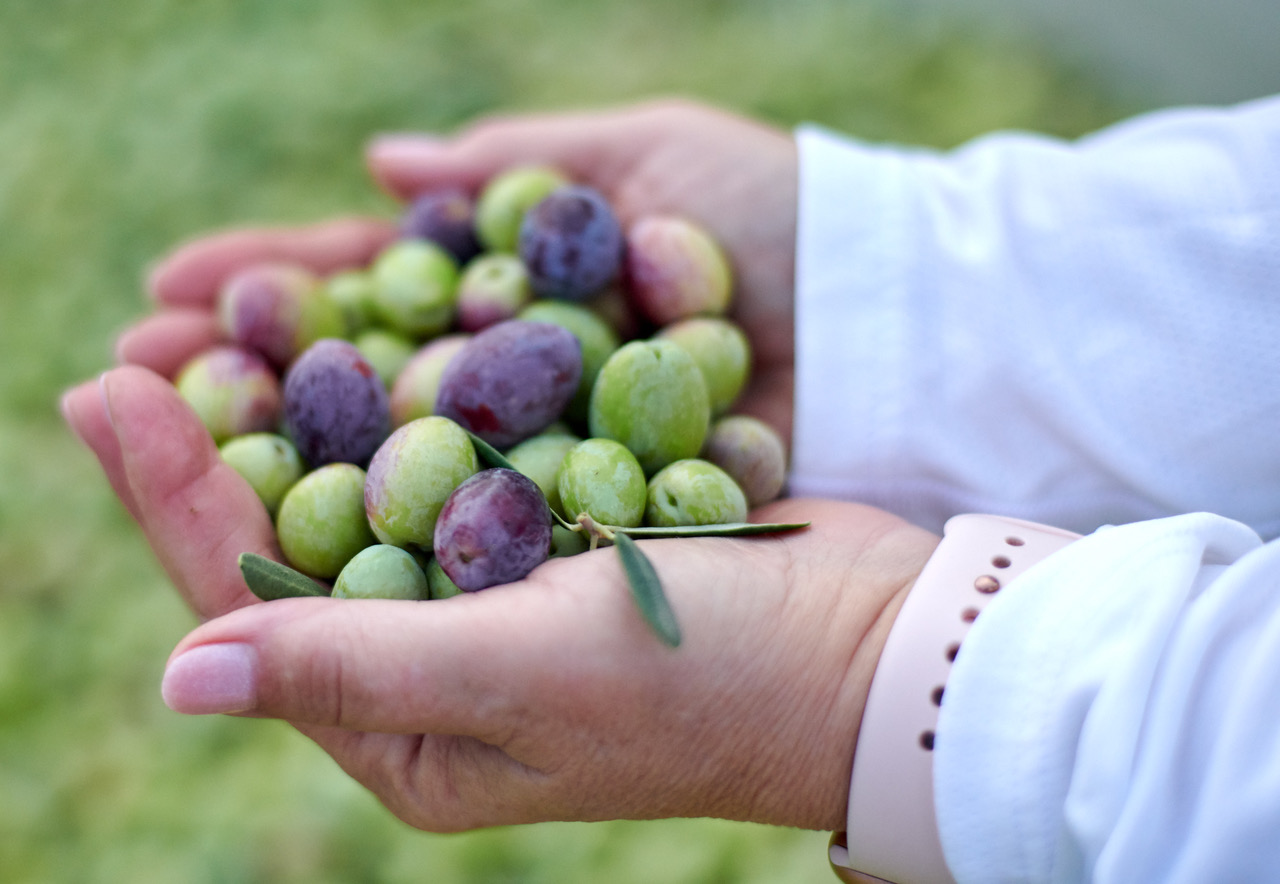
Karen Bond holds her prized olives.
Tell us about that process.
We found a grower who said they had imported trees to the U.S. When the trees arrived, the FDA called us and said, "We have a problem; come down to the San Francisco airport."
So we had to go to the Department of Agriculture at the airport, and they took Malcolm through a series of clean rooms, opened the box, and showed that the little baby trees had soil on the roots. They then opened an incinerator and threw our trees away. So that was heartbreaking.
We had to find a grower who could prove they had imported to the U.S. We finally found someone. In the meantime, the University of Florence helped us design our orchard, and they recommended that we bring in a fourth tree type, a Pendolino. Even though olives are self-pollinating, the Pendolino is a pollinating tree, and we'd have a higher production.
Our little baby trees arrived on Christmas Eve, 2006, six years into the process. I always tell people we were born during a time when delayed gratification was a good thing.
We took the baby trees home on Christmas Eve. They arrived on a Lufthansa flight at around one o'clock. We were just praying they would get through customs and then the Department of Agriculture because they were only packed in vermiculite. It was a three-day holiday, so everything would be closed, and we wouldn't be able to pick them up. They arrived at the Department of Agriculture at ten minutes to five o'clock, and they got cleared. So we were able to bring them home.
The next day, I cooked dinner, family and friends came over, and we planted 1,250 trees in two-inch pots. The problem was that they had to be quarantined, so we had to put them in a greenhouse.
The state and the feds would come and pull a tree out with its roots and take it with them to test for pests and diseases.
Because the trees were growing, we had to transplant them to five-gallon pots. And finally, after two and a half years, they said we could plant them.
So that's 2008. I think they went into the ground in the spring of 2009 because they were cleared in late summer, and you just can't plant at that time. It's too hot.
In the first year, 2010, we actually had little olives on all the trees, so we picked them all. We only got about 300 pounds.
Malcolm made his own homemade mill, and we milled them, and it tasted good. So we said,
"Okay, let's move forward."
The very next year, we got around 3,000 pounds. There was a mobile mill then, and the oil tasted great, so I said, "Let's enter the Yolo County Fair." Malcolm said, "No, we're going to New York and L.A." They're the two big international competitions where everyone from around the world enters their olive oil. We won gold in New York, gold in L.A., Best in Show in Yolo County, and Best in Show in Napa County in our very first year.
Our phone started ringing off the wall, and people wanted to buy our oil. The same thing has happened just about every year.
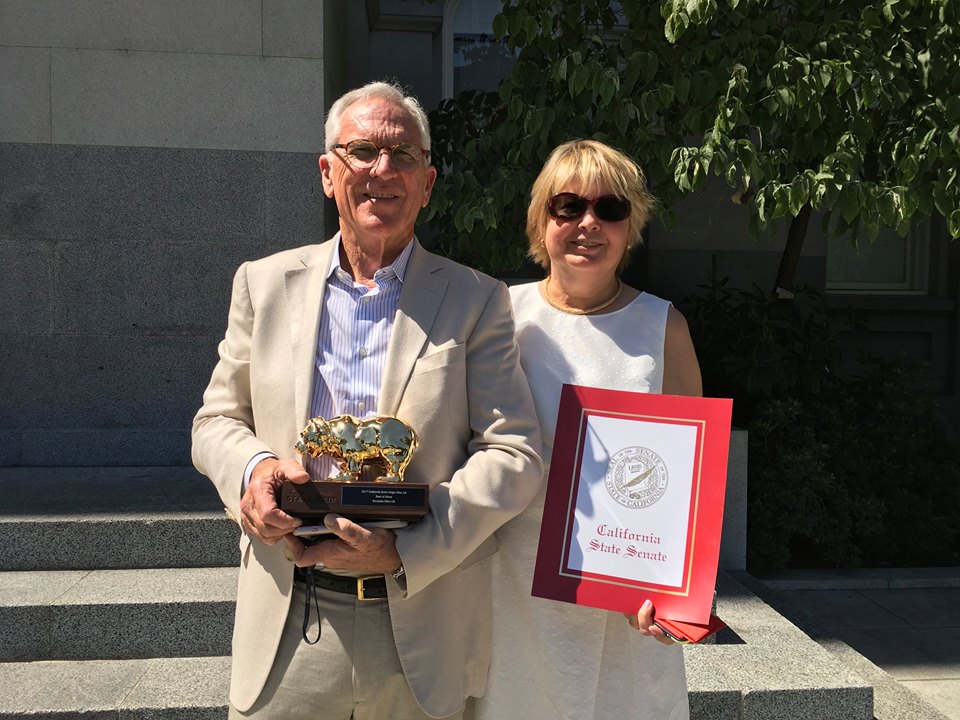
Malcolm and Karen Bond
What sets Bondolio apart from other California olive oils?
California olive oils are Spanish, French, northern Italian, or Greek, which have different flavor profiles. Arbequina tends to be a very mild oil, and so many people grow Arbequina. I wanted ours to be different from everyone else's.
Some people have brought in Biancolilla, and some people have brought in Nocellara, but no one has brought in Cerasuola. It's very difficult to propagate. They told us we would lose 80%, and we did not. We probably lost only 10%. Because we have such rich soil here, they were happy growing here. But I think that's what sets us aside. It's a totally different blend from everyone else in California.
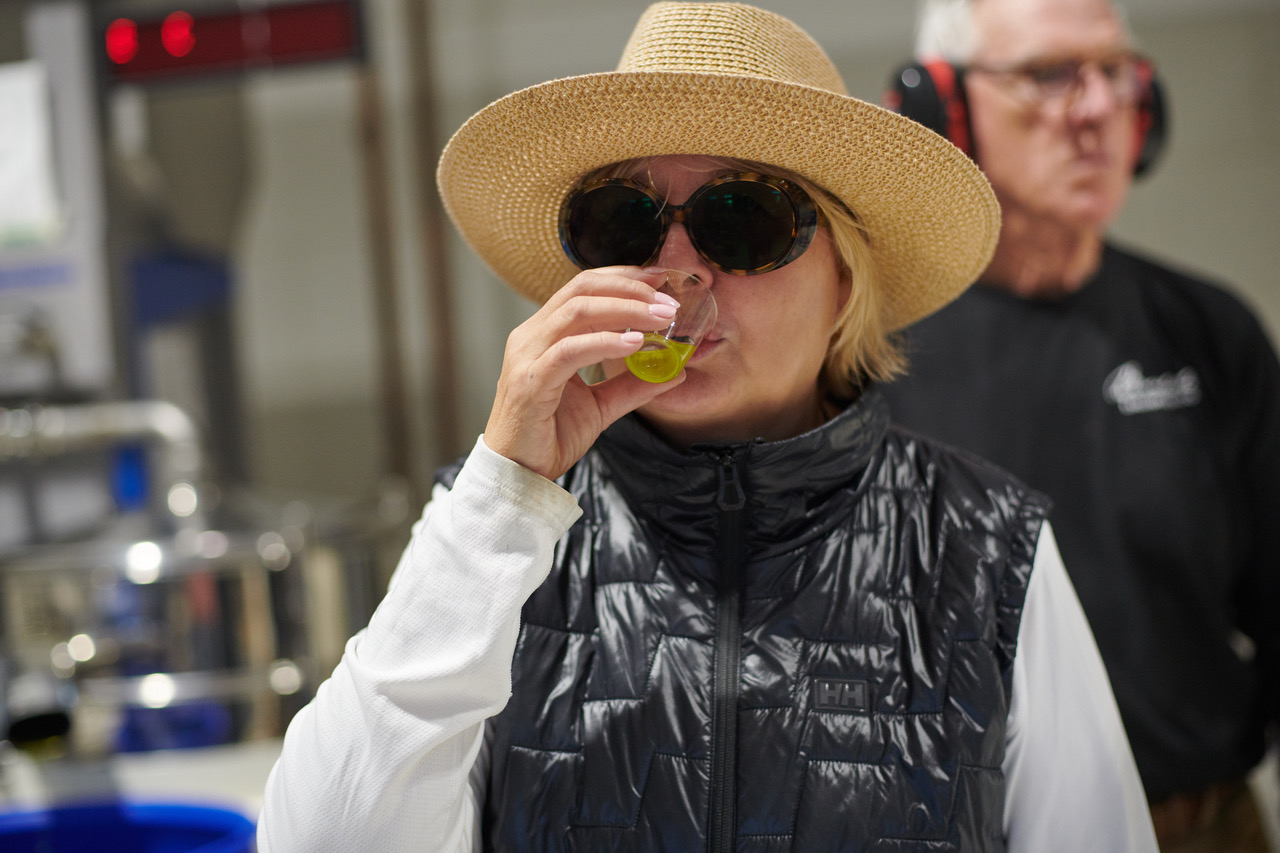
Karen Bond sips her liquid gold.
How do you use your olive oils?
I use olive oil every single day. For example, we normally have poached eggs and roasted potatoes for breakfast, so we roast the potatoes in olive oil and pour olive oil on the eggs. I use olive oil in just about everything I cook, including pasta, risotto, and fish.
We make mandarin oil with our Pendolino. We pick it on the very last day of milling and throw fresh whole mandarins in as we're milling. So it's a great orange oil. I put that over halibut and bake with it. Then, when it comes out of the oven, I pour a little bit of oil over it.
When Nathan Norris was the head chef of Zuni Cafe, he told us that we had the most versatile olive oil. They always have an olio nuovo dinner in December; he did a whole dinner with our oil. He started with a persimmon salad with goat cheese and pomegranate seeds on the top and poured our oil with a little bit of salt on it. He then made a salad, then he made fish, and then he made a dark chocolate sorbet with our oil on top. And it was to die for. Our olive oils don't have a bitter flavor, so they can go with a lot of different foods.
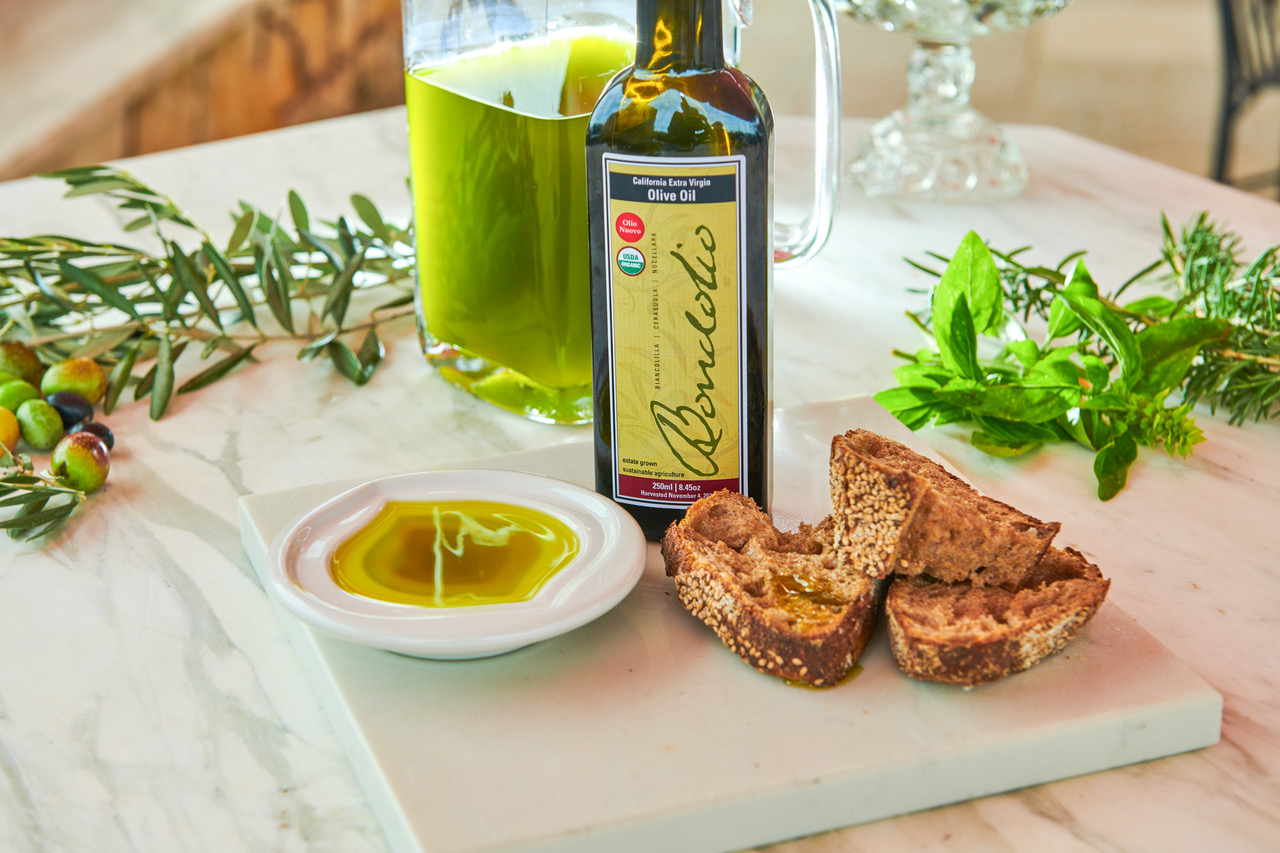
Bondolio olive oil served with crostini.
You give tours by appointment. Tell us about those.
On our tour, we serve food. If there are 10 or more people and they request it, we'll do pizza on the patio for them. Our biggest tours right now are from retirement communities. They'll come up with 40 people on a bus, and we'll do a tour, and then we'll do pizza for them.
They'll get to taste our oils and vinegar, but sometimes, I serve it with hummus. In the summer, when there are cherry tomatoes because we have a big garden, I will do what I call caprese shooters with our olive oil. I sometimes do crostini, where I'll take fresh tomatoes with garlic and basil with our olive oil and put that over toasted bread. I try to give people ideas on how to use the oil.
We are open to the public one day a year, the second Sunday of December, when we introduce our new oil and have other vendors there. We have pizza, beer, wine, and sodas on the patio, rain or shine.
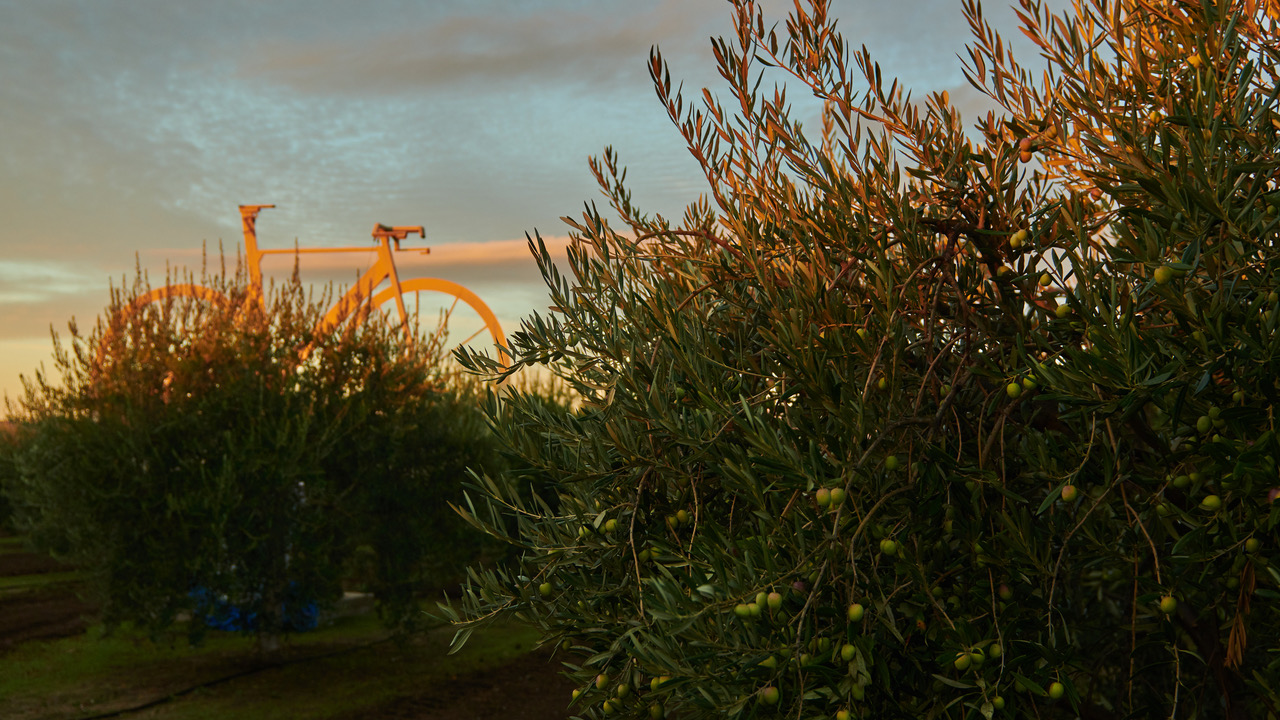
Bondolio olive groves
What do you hope people take away from your olive oil?
How to use our oil and to use it quickly: Many people have the misconception that olive oil is like wine in that it ages well. It does not. The longer you keep it, the flavor profile goes down. Ours usually last two years, but it doesn't have the oomph it initially has.
I also try to make people understand how healthy olive oil is for them. There's so much evidence coming out now about how olive oil reduces breast cancer, reduces cholesterol, and helps prevent Alzheimer's disease. Both my husband and I are in our seventies. Neither one of us takes any medications. We're extremely healthy. We exercise every day, and we ride our bikes every day. We do Pilates and things, and we go to the doctor, and they say, "We can't believe that you don't take any medications." But I think it's partly because of the olive oil.
If you enjoyed this article, consider subscribing to my newsletter for more content and updates!






